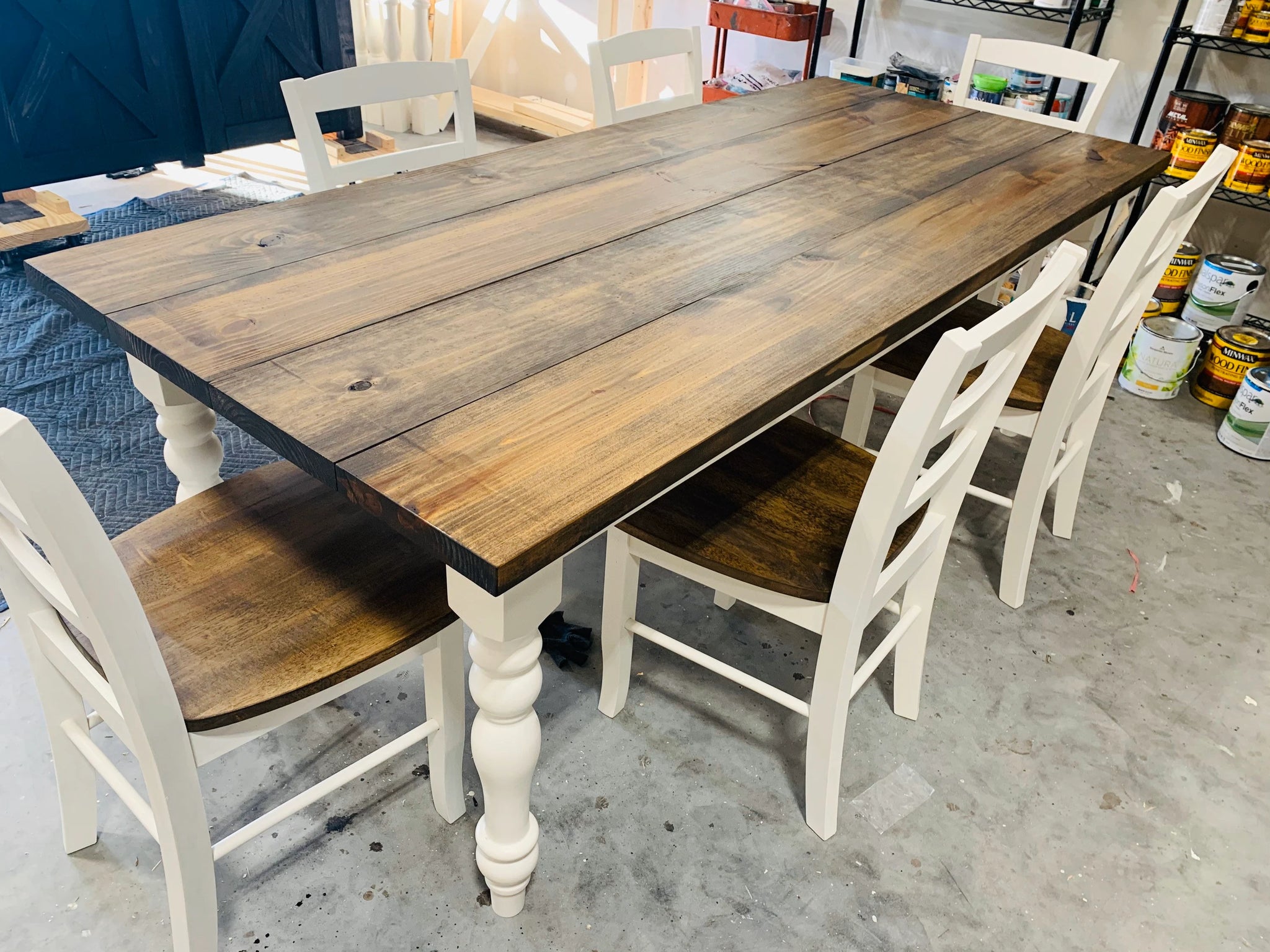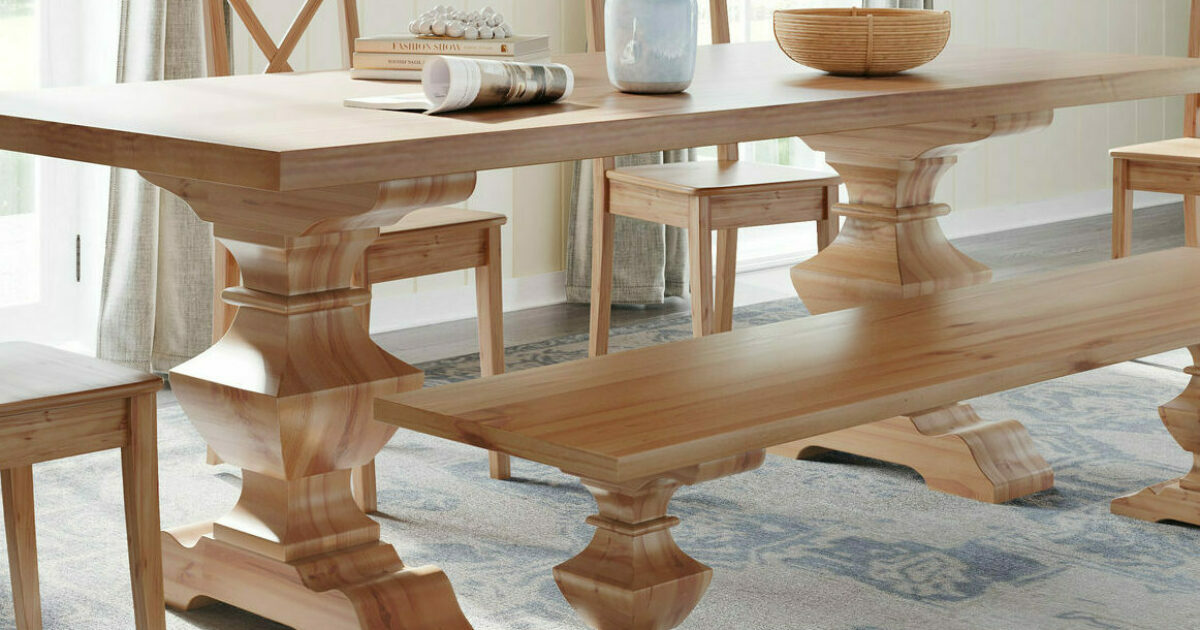Create Spectacular Furniture with Elegant Dining Table Legs Wood Choices
Checking Out the Various Kinds Of Dining Table Legs Timber for Your Eating Room
The selection of eating table legs wood can profoundly influence both the functional and visual qualities of your eating area. Solid timber choices, such as oak and walnut, offer a timeless look with unequaled resilience, while crafted wood options supply cutting-edge designs that simulate the splendor of all-natural grains. Additionally, the expanding trend of recovered wood presents a lasting component that attract environmentally mindful consumers. As we discover these various choices, it comes to be important to take into consideration not only the aesthetic allure but likewise the functional effects of each material option. What variables should guide your decision?
Solid Timber Options

Unlike crafted products, strong timber is less susceptible to bending and damage over time when appropriately kept. Each item of strong timber is one-of-a-kind, showcasing private features that include to the appeal and personality of the eating table.
Furthermore, solid wood can be finished in numerous ways, varying from all-natural oils to discolored surfaces, allowing homeowners to personalize their furniture to match their design. In summary, picking strong wood for dining table legs not only makes certain structural honesty yet also boosts the aesthetic allure of the dining location, making it a rewarding financial investment for any type of home.
Engineered Wood Alternatives

Plywood, constructed from numerous layers of wood veneer, is steady and specifically strong, making it an outstanding selection for eating table legs. Its layered make-up enables it to endure changes in moisture and temperature level much better than traditional strong wood. MDF, on the other hand, uses a smooth surface for paint or veneering, allowing developers to achieve a sleek look while keeping structural integrity.
Particleboard, often used in budget-friendly choices, provides good toughness and is lightweight, making it easier to manage. It may not be as long lasting as plywood or MDF. It is important to take into consideration the intended use and preferred visual when selecting crafted wood options. These products not just improve the capability of dining spaces however additionally permit greater style flexibility, guaranteeing that typical and modern styles can coexist harmoniously.
Reclaimed Timber Includes
Recovered wood provides an one-of-a-kind blend of sustainability and personality, making it a significantly popular choice for dining table legs. Sourced from old barns, manufacturing facilities, and other frameworks, redeemed timber embodies a background that new materials merely can not reproduce. Each piece carries its own story, marked by distinctive imperfections, knots, and differing grain patterns, which add to a table's special aesthetic charm.
In addition to its aesthetic beauty, recovered wood is an environmentally friendly alternative. By repurposing previously utilized products, it lowers the need for brand-new lumber, hence assisting to conserve woodlands and decrease waste. This aligns with an expanding consumer choice for lasting methods in home furnishings.
In addition, recovered wood is frequently extra durable than recently harvested timber due to its age. The all-natural drying procedure that reclaimed wood undertakes cause a denser and more powerful product, making it less at risk to warping and splitting. This boosts the durability of eating tables, allowing them to withstand the rigors of daily usage.
Softwood vs. Wood
When picking dining table legs, understanding the differences between softwood and wood is critical for achieving both practical and visual goals. Softwoods, originated from coniferous trees, such as yearn and cedar, are characterized by their lighter weight and simplicity of adjustment. They typically display an even more rustic appearance, making them appropriate for country-style or laid-back eating rooms. Softwoods are usually less resilient than woods, which can be a factor to consider for family members or those seeking durability in their furnishings.
On the other hand, hardwoods, sourced from deciduous trees like oak, cherry, and maple, are renowned for their thickness, toughness, and toughness. The detailed grain patterns and rich shades of woods provide a sophisticated and classic appeal, making them imp source suitable for formal eating setups. While hardwoods often tend to be extra pricey and much heavier, their durability versus damage often warrants the financial investment.
Ultimately, the option between softwood and wood for eating table legs should line up with your style vision, use demands, and spending plan, making certain that your eating space mirrors your personal design while continuing to be useful over time.

Finishes and Treatments
The aesthetic allure and long life of table legs can be dramatically improved through different coatings and therapies. These procedures not only secure the wood from damages yet likewise elevate its look, permitting it to complement varied interior designs.
One usual treatment is read the full info here staining, which passes through the wood and improves its all-natural grain while adding color. Stains provide an abundant, elegant appearance, enabling house owners to match their furnishings with existing style. Conversely, clear finishes such as polyurethane or varnish create a protective layer without altering the wood's original shade, making sure durability against damage.
Additionally, natural oils, like tung or linseed oil, nurture the wood and use a subtle shine, all while being environment-friendly. These oils allow the surface area to take a breath, protecting against dampness buildup and possible bending.
For those looking for a rustic charm, weathered or distressed coatings can be applied to develop an aged look, adding personality to the item. Inevitably, the option of therapies and coatings depends on personal preference, preferred read looks, and the particular wood kind, making it vital to take into consideration these elements when picking table legs for your area.
Conclusion
Solid timbers, crafted alternatives, and reclaimed options each deal distinct benefits, providing to numerous preferences and needs. Ultimately, the selection of timber type must straighten with wanted style, sturdiness, and environmental considerations, improving the general eating experience.
The option of dining table legs timber can greatly affect both the functional and aesthetic top qualities of your eating space - Dining Table Legs Wood. Solid wood choices, such as oak and walnut, offer a classic appearance with unrivaled sturdiness, while engineered timber options supply ingenious styles that simulate the richness of all-natural grains. Strong wood uses a classic high quality that can elevate the general style of an eating space. Each item of solid timber is special, showcasing individual attributes that include to the appeal and character of the dining table
Additionally, reclaimed wood is frequently more durable than newly collected wood due to its age.